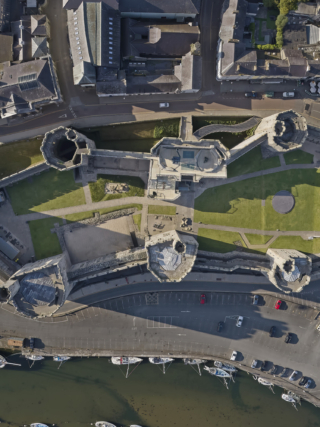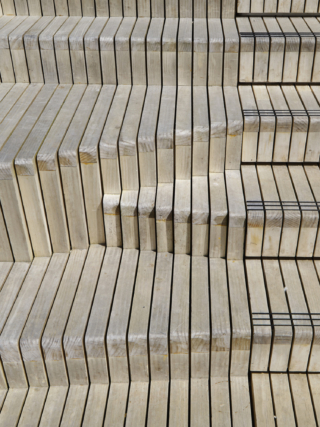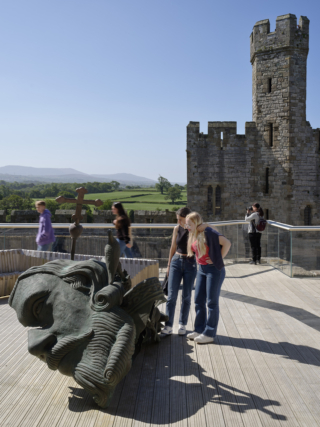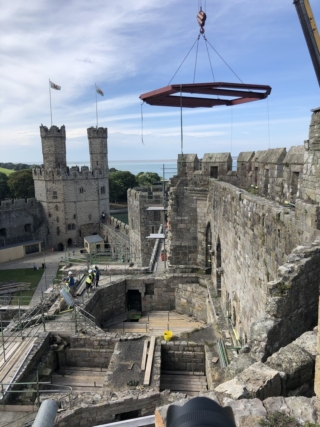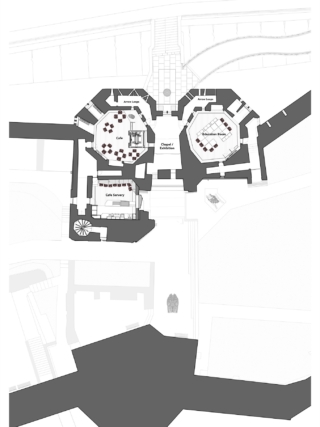Architecture practice Buttress has breathed new life into the castle, making it accessible to all.
Caernarfon Castle in northwest Wales is one of the country’s most important historical sites. Dating back to 1283 (with the first fortification built on site in the 11th Century), the castle was awarded World Heritage Site status in 1986. Now a popular destination for tourists, many parts of the castle had been previously inaccessible to those with limited mobility.
Now, however, that has changed. After three years work to the castle focusing on conservation and visitor experience enhancement, the primary gatehouse, known as ‘King’s Gate’, has been renovated to grant visitors access to certain sections of the medieval structure for the first time in centuries.
New seating areas have been created to be physically separate from the castle walls, allowing them to be removed or changed at ease. The Accoya timber specified has similar tones to the castle’s original masonry and will, in time, weather, being visually in step with the castle.
Commissioned by Cadw, the historic environment service of the Welsh Government and also part of the Tourism and Culture group, the £5m project allows all visitors to enjoy an upper-level wall walkway that traces elements of the castle’s perimeter, affording views into the medieval site and over the River Seiont.
Buttress, who has offices in Manchester and Leeds, added bespoke outdoor elements to the triple-towered gatehouse in the form of a new viewing deck and seating areas made from Accoya timber. Designed to complement the building’s form, these interventions were deliberately kept physically separate from the castle walls, touching the building lightly only at access points to minimise impact on the historically significant site, and ensuring they can be easily removed as and when need be.
Internally, there are three new floors, which host accessible toilets with changing places, a café, a gift shop, a reception area, staff facilities, storage, and “immersive interpretation areas” narrating the history of the castle’s builders.
On the upper level, surviving aspects of the towers’ castellation help shape a viewing deck and seating, of which can now be accessed via a new glazed lift.
“From the very first conversation we had with Cadw, it was clear that making the King’s Gate accessible to all was the key to unlocking the potential of this part of the castle,” said Buttress in a statement on the project. “The ability to bring people to the upper floor and shape a new place for them to dwell and discover more about the history of this extraordinary place has driven every design decision we have made through this complex and challenging project.”
“We wanted to create something that would complement the existing structure, both aesthetically and functionally, said senior architect and project lead Lucy Ashcroft. “Accoya is incredibly durable and requires little maintenance, so staff can focus on delivering an enjoyable guest experience, rather than worrying about maintenance work.”
In addition to the efforts to improve accessibility to the castle, conservation work including window tracery repairs, vegetation removal, and masonry cleaning and repointing have been carried out.
“One of the greatest things about this project is that it’s not a single piece of architectural design; it’s a collection of interventions that create experiences and improves the facilities for all visitors within the King’s Gate,” added Lucy Ashcroft, senior architect at Buttress and lead architect on the project. “We’ve achieved this by ensuring our interventions slot into the castle’s story, in a contemporary way, with the castle acting as the main character.”







